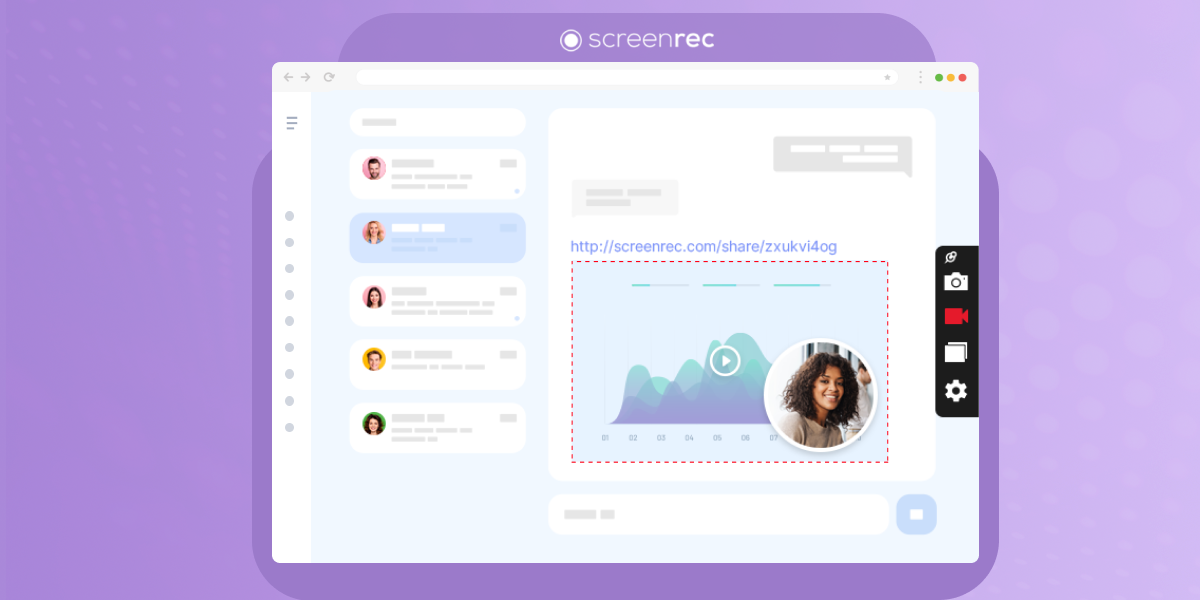Your Guide To Effective Communication In The Workplace

We always hear about how communication is imperative in any successful relationship. But did you realize that that idea transcends into the workplace as well?
Think about it.
Communication in the workplace is the simplest way to avoid potential conflict.
The importance of communication in the workplace is often underestimated and misunderstood but, by all means, it’s not a Dark Art! If we can understand the types of communication as well as how to communicate effectively in the workplace, we will find our days will become less stressful and chaotic.
And no, you don’t need to read hundreds of communication in the workplace articles in order to get better at it. Let’s break down the essentials!

Communication at work can be SO frustrating!
Why is Communication Important in the Workplace?
Hopped up on caffeine and stress, obliterating workplace conflict is every employee’s dream. This is what effective communication can accomplish.
Clear communication helps us understand the thoughts and feelings of our co-workers. It helps to build these relationships which can improve teamwork and overall office morale.
Here’s an example…
Imagine for a moment that you work in a hostile working environment in which your co-workers constantly argue, bicker and debate.
Tom claims that Judy didn’t send him the quarterly report, a report that he needs to read over and revise before the deadline. Judy claims that she did and back and forth they go.
This could all be avoided if Tom and Judy understood the appropriate ways to communicate with each other.

What’s the importance of effective communication in the workplace? Well, it can make or break your career…
The sad truth is that this sort of situation is the norm in many companies and it can lead to lower productivity and negative work ethics. A recent survey revealed that, on average, larger companies could stand to lose $62.4 million annually due to “inadequate communication to and between employees.”
The importance of good communication cannot be overstated. If you want a lighter, happier work environment with reduced workplace stress, then talk it out!
What Are The Four Types of Communication?
The best way to reap the benefits of effective communication is to understand the 4 basic forms of communication.
1) Interpersonal

This is the most common form of employee communication. Here’s what it is about:
- Sharing. Essentially, interpersonal communication refers to the close setting of co-workers as they commonly (and willingly) share personal details.
- Listening and speaking. Understanding interpersonal communication is simple and only requires a good ear and the comfort to speak freely.
- Team Building. Employers would be wise to encourage interpersonal communication because it helps employees connect on a personal level.
2) Non-Verbal
Non-verbal communication is exactly what it sounds like; communicating without words. Here’s what effective non-verbal communication entails:
- Hidden emotions. It is important that we understand non-verbal communication it often determines hidden emotions or feelings.
- Body language and facial expressions are major components of non-verbal communication. These signs are used to read the communicator.
- Ambiguity. Pay attention to non-verbal communication but keep an open mind because, sometimes, non-verbal cues are misread or misinterpreted. A hand on your hip may be a sign of humor to you while being a sign of displeasure to a co-worker. Avoid this pitfall and get to know them before deciphering their movements.
- Potential for misunderstanding. When using or taking part in non-verbal communication, it would be wise to be familiar with the person you are communicating with.
3) Written
This is self-explanatory, but just to clarify, written communication is letters, emails, memos, or notes written to another person. Here’s what you need to know about written communication:
- It’s safe. Being able to take the time to thoughtfully express yourself (whether it is an opinion or matter of fact) while checking for and avoiding errors or inappropriateness.
- Open to (mis)interpretation. Lacking a personal touch and oftentimes emotion creating a cold and distant environment/relationship. Written communication can often lead to misinterpretation of tone.
Consider this example…
“You’re such a genius!”
vs.
“You’re such a genius.”
One is a compliment and one is an insult.
It is very easy (and hazardous to your job) to misinterpret such messages. Sarcasm doesn’t come across the same when it is being read.
- Requires great care. Since written communication is typically unavoidable on the job site, you must be sure to reread, edit and proofread. Written mistakes are often un-fixable. Do yourself a favor, and read it aloud. If it sounds a bit off… scrap it and you’ll thank yourself later. You can also use an online grammar checker to avoid grammatical mistakes.
By the way… Written communication is easier and much less distracting with the right team communication apps
4) Oral

Oral communication is what we are all used to ever since we were toddlers; speaking in order to be understood. Here’s the skinny on oral communication:
- Helps resolve conflict. It is the best way to avoid and mitigate conflict in the workforce as there leaves little to no room for misinterpretation. (If the communicator is speaking clearly.)
- Very effective. With tone and inflection helping things along, communicating orally makes conversations clear and direct, reducing the chance for miscommunication.
How to Improve Your Communication Skills At Work
(Putting it to Work at Work!)
All right! So you have an idea about why professional communication in the workplace is important and how those various types of communication play a role in the workplace environment.
Good job!
“But how do we use this knowledge to improve communication skills at work?”
We’re glad you asked! Whether you’re a business owner or you work at customer service, setting goals will help you achieve effective communication at work. Here are six essential communication skills to strive for.
1) Be Personable

Everyone knows that you can collect more bees with honey than with vinegar. If you hope to open positive communication at work, then you must be open to receive it. Be friendly! No one wants to strike up a conversation with an antisocial person, so make this one of your primary communication goals in the workplace.
2) Get to Know Your Co-Workers
Understanding the people you are working with will go a long way when learning how to communicate with them. Each person communicates in their own way. Knowing your co-workers will help you best interpret their message, body language and overall communication style.
3) Use All Four Types of Communication
The best way to become a pro at effective communication is to practice.
*Practice makes perfect!*
Utilizing the four types of communication allows you to become familiar enough to spot them within your coworkers.
If you notice that Jessica makes a lot of facial expressions, then, odds are, she communicates better non-verbally. It would be up to you to notice her preference and accommodate it.
4) Master Active listening

One thing you need to know about good communication in business is that it’s all about listening skills. Communicating isn’t just about getting your own point across but rather about the ability to understand and navigate an individual through discussion. Maintain eye contact and listen carefully when a co-worker is speaking. At the very least, this is a sign of respect.
5) Watch your language
When communicating in the workplace orally, always choose your words carefully. It is a place of business, not a local bar. Professional language and subject matter is always recommended to avoid offending co-workers or superiors.
6) Talk About It!
Don’t be afraid to talk about communication. It doesn’t have to be this unspoken subject that we must all learn secretively and independently. Not at all. Feel free to ask a coworker their preferred communication method. If you are having a hard time interacting, let them know! Communication is all about honesty and authenticity. So keep it real and talk it out.

Hone your work communication skills and your life will be easy.
Examples of Good And Bad Communication Skills In The Workplace
Having these improved skills will certainly help you communicate more effectively in a business setting, but let’s go a bit further and give a few examples of when, where and how to put it all in place.
1) Anger management
There is no doubt that conflict will arise when dealing with co-workers. It never helps to hold on to anger or any negative emotions but shouting at work is a sign of poor communication skills. Here is an example of work communication gone awry.
The “boss” in the above video made the same mistake over and over again—he was arrogant and he kept lashing out at the employees. Don’t do this.
When you find yourself heated, take a few deep breaths and count backward from 10. It’ll calm you enough to speak with less emotion and work together with your teammates to resolve the issue.
2) Email Etiquette
We’ve mentioned it before, it is difficult to read tone and inflection, so avoid them at all costs. In professional emails, don’t try to be funny or cunning especially in those sent to higher-ups. And, really, think before hitting “Send”. Is it appropriate? Could it be offensive? Keep your emails polite but straightforward and avoid any buzzwords. See this video for hilarious examples of what NOT to do when you’re emailing co-workers.
3) Visual communication
Getting your point across quickly and helping others save time are examples of good communication skills in the workplace. You can achieve both with video.
For example, imagine you are a managing a remote team of developers and you want to report a bug. You send an email thinking that you’ve described the glitch thoroughly, but… the developers can’t seem to reproduce it. Instead of spending hours emailing back and forth, you could simply record your screen with an easy screen recorder like Screenrec, narrate the video and explain exactly what your experience is.
Show, don’t tell.
Best of all, you don’t have to schedule a meeting. You can just record your screen and email the video using the private sharing link that Screenrec generates for you. Your team can watch it in their own time.
See the video below to learn more.
Conclusion
Effective communication is pretty simple when you think about it. Just don’t overthink it. Remember, all you have to do is try to understand the people around you and get to know them as they get to know you. Communication is all about transparency. So, be nice and personable, but, also, be you. Try following the above communication best practices and you’ll be a lean-mean-communicating-machine in no time!
Frequently Asked Questions
1. Focus on what you want the other person to hear; 2. Become a great listener; 3. Master public speaking; 4. Learn to give honest feedback; 5. Learn to disagree politely; 6. Tailor your communication based on age, gender, culture, etc.; 7. Learn to network better; 8. Master the art of writing emails.
Good workplace communication can have positive effects on performance including increased productivity, higher employee morale, repeat business, improved employee retention, and a healthier work environment overall.
It depends on your specific workflow. For remote teams, real-time chatting with Slack and on-demand video emailing with ScreenRec could be the winning combination. Co-located teams may want to avoid chat in order to reduce interruptions and, instead use a project management tool like Asana or Trello where everyone can comment on tasks and share feedback.
















DON’T MISS OUT
Get updates on new articles, webinars and other opportunities: